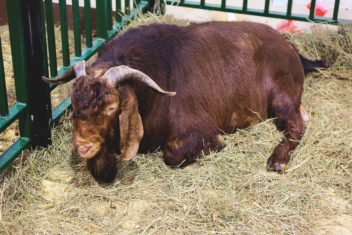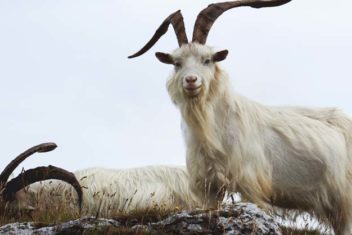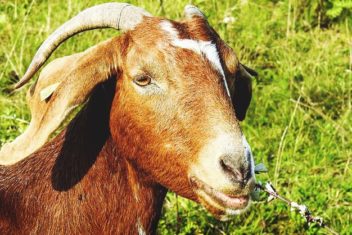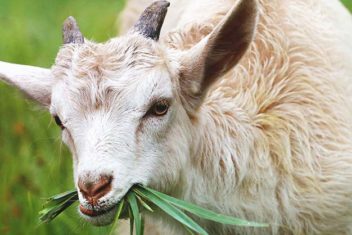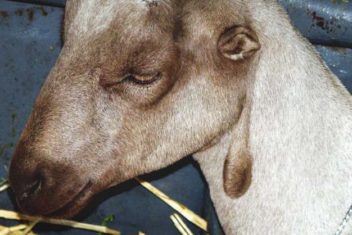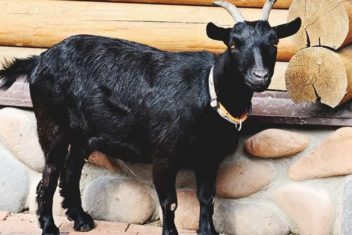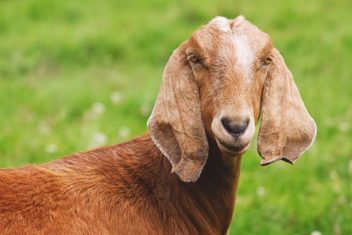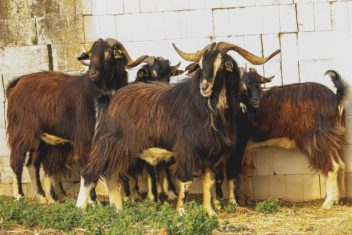Hailing from New Zealand, the Kiko goat was bred to grow fast and function as a high-production meat goat.
The word “Kiko” is derived from the Maori word meaning meat or flesh. And the breed was favored due to its hardiness and ability to thrive under extreme conditions.
The reason for their livability is because breeders took feral goats and bred them with dairy goats. This ensured the offspring would inherit the breed’s excellent mothering abilities and health hardiness.
In the 1990s the Kiko goat was brought to the USA and eventually the American Kiko Goat Association was born.
Kiko breeders are passionate about their breed of choice and for good reason. This goat is a superstar meat goat that is very low-maintenance.
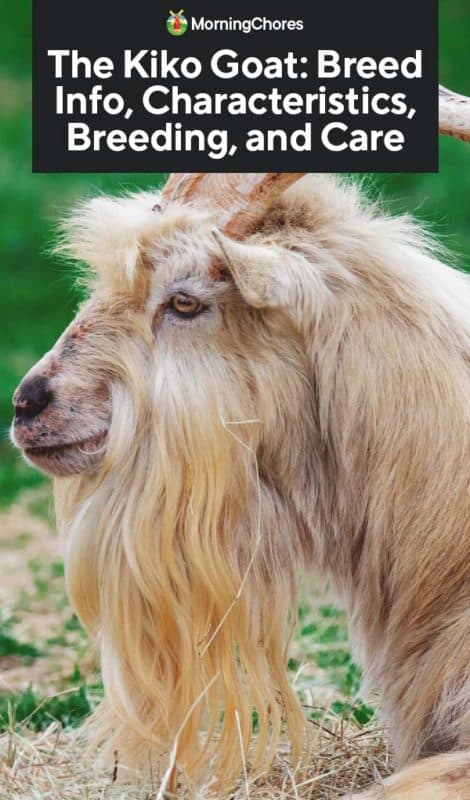
Breed Standards of the Kiko Goat
While some goat registries are quite strict, the American Kiko Goat Association takes a more casual approach.
At this time, there’s quite a bit of wiggle room, but the gist of it is as follows:
“The Kiko is more difficult to “define” than most breeds. As a breed, it is typically not shown and there is no breed standard. This is deliberate to allow for different “types” to adapt to the multiple environments across the United States. The Kiko is ‘A jack of all trades.’ Famously a maternal breed but also used as a terminal sire. The primary expectations based on the breed are as follows:
- Expected to ‘grow fast’
- Expected to be ‘hardy’
- Expected to be low maintenance
- Expected to be productive does and effective sires”
So, while the standards are a little fuzzy for now, there are DNA tests that can be completed to confirm that a goat is of the Kiko variety.
Kikos come in a variety of colors, but they are most often white with long coats. They sport beautiful long horns that twist outward.
Typical Characteristics
The Kiko goat is widely appreciated for its ability to grow fast and produce a large carcass. Alongside the Boer Goat, the Kiko is growing in popularity throughout the United States for its desirable meat goat characteristics.
1. Utility and Production
The Kiko goat is utilized mainly as a meat goat and is often crossed with dairy or other meat breeds to produce hardy fast-growing goats. Bucks weigh around 275 pounds while does average around 125 pounds.
2. Hardiness
The Kiko is touted as one of the hardiest breeds of goat due to their recent feral origins. The Kiko can survive on browse and legume-filled pasture with little supplement.
3. Temperament
Most Kikos are kept as livestock, and not pets, and it is done this way intentionally to keep the natural livability of the Kiko goat. With that being said, goat packers have been cross-breeding the Kiko with dairy goats and are happy with the docile disposition of the breed.
4. Maternal Instincts
Some goat breeds lack in the maternal instinct department, but not the Kiko. Breeders of this goat breed proudly proclaim their goats’ ability to birth and care for their kids with little-to-no supervision from the goatherd.
Breeding Kikos
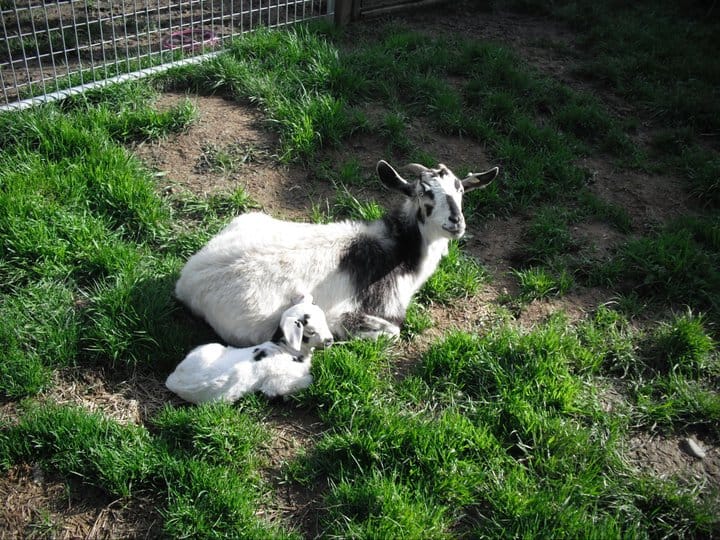
Kikos are polyestrous animals, meaning they can breed year-round. Once bred, 155 days later a Kiko kid is born. Not surprisingly, the Kiko can often be expected to give birth to twins or triplets (though this is not typical in the first year of maturity).
How to Care for Kikos
1. Feeding Kikos
Like most goat breeds, Kikos prefer to browse (rather than graze) and they get their nutrition from weeds, tree bark, leaves, and of course grasses. If there isn’t a healthy mix of grasses and legumes in your pasture, Kikos will need supplemental feed, hay, and grain.
2. Housing and Fencing
Kikos aren’t exempt from the escape artist label, and like most goats, they will jump, crawl, and squeeze out of their enclosures if due diligence is not given during the construction phase.
Kikos should be given shelter from the elements, and fencing that is at least 4 feet tall. Electric fencing is a great option for Kiko goats because they will not be able to get their heads stuck in it, nor will they lean or climb on it.
Alternative Meat Goat Breeds
Kikos are becoming one of the more popular meat goat breeds in the US, but at the top of the chain is the ever-popular Boer goat, and Boer goat crosses.
Many meat goat farmers enjoy the hardiness and mothering abilities of the Kiko because they favor a hands-off approach. But crossing Boer goats, and dairy goats, with Kikos, is also a way to get the best of both worlds.
So if you’re looking for a hands-off meat breed, the Kiko is your first choice. With this reliable breed, you’re sure to have worry-free kidding seasons and hardy healthy winters with your goats.

